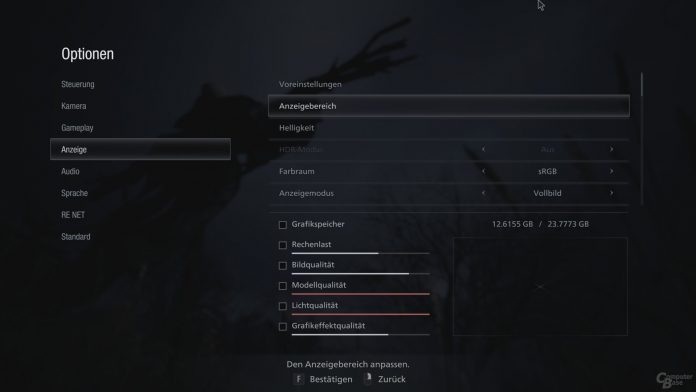Resident Evil Village offers DirectX 12, Variable Rate Shading and AMD's FidelityFX as well as ray tracing on the PC. Even in Ultra HD, the performance in the test is surprisingly high, as benchmarks with Nvidia GeForce and AMD Radeon show. However, the game cannot set a new graphical milestone.
Table of contents
- 1 Outstanding performance also with ray tracing
- Resident Evil “8” VII.I.AGE in the test
- Revised RE engine also offers ray tracing
- An extensive, but somewhat annoying graphics menu
- Variable Rate Shading visibly reduces the image quality
- 2 benchmarks in FHD, WQHD and UHD, frame times and VRAM allocation
- The test system and the benchmark scene
- GPU benchmarks in Full HD, WQHD and Ultra HD
- Incredibly regular frame times
- 8 to 10 GB VRAM is enough for everything
- 3 Ray tracing is so good and fast
- Ray tracing brings better lighting and a few reflections
- The performance of ray tracing is surprisingly good
- Ray tracing benchmarks in Full HD, WQHD and Ultra HD
- 4 ray tracing frame times, game review and conclusion
- The frame times with ray tracing are slightly different
- How good is Resident Evil 8?
- Conclusion
Update 05/06/2021 09:15 am
Not quite a day after the NDA expired, ComputerBase analyzed various tests by other magazines and compiled a summary of the playful quality of Resident Evil Village. The game will be released on Friday.
Resident Evil “8” VII.I.AGE in the test
After Resident Evil 7, the popular horror series with the new editions of Resident Evil 2 (test) and Resident Evil 3 (test) has been on the remake track for the past two years, with the new edition of the second part enjoying great popularity. The now appearing Resident Evil Village, however, is a completely new game. The Roman number for 8 (VIII) is emphasized by Capcom in the word “Village” for a reason.
The revised RE engine also offers raytracing
In order to make the eponymous village look pretty, developer Capcom has significantly further developed the in-house RE engine, but without missing the style that is usual for Resident Evil. The result is impressive. Resident Evil Village may not be a graphics bomb – Cyberpunk 2077 (test), for example, is definitely prettier – but it still looks good. There are only a few technical weak points and the performance is surprisingly high up to 4K – no matter which controls you turn. In addition, the graphics manage to create a dense atmosphere, which is essential in a scary game.
The graphics can score with a high density of details as well as a pretty shadow display and lighting. The character representation is successful, the same applies to the animations. However, there are also weaknesses. Overall, the texture quality is convincing, but in some places there are surfaces that appear less detailed. In addition, some shadows in the game struggle with a lot of grain. And that cannot be switched off, regardless of which graphic option is turned.
The anti-aliasing also fluctuates somewhere between good and bad. It does a decent job in Ultra HD: Even then, the image calm is not optimal, but since Resident Evil Village is a dark game, this is hardly noticeable. In lower resolutions, but especially in Full HD, the graphics flicker properly and the picture becomes blurred. If your own monitor does not have a high resolution and there is still enough computing power available, it is advisable to increase the rendering resolution of the graphics card using the driver's own VSR or DSR function, which drastically reduces both problems.
Developed in collaboration with AMD
The PC version of Resident Evil Village was developed in collaboration with AMD. Not surprisingly, AMD's FidelityFX construction kit found its way into the game, two modules were taken over. The game Contrast supports Adaptive Shading (CAS) and thus automatically sharpens the graphics, although there is no controller for the sharpness effect. In addition, CACAO and thus AMD's new environmental obscuration is included.
Unlike its predecessors, the game only supports DirectX 12, DirectX 11 is no longer available. Variable rate shading is available as a feature of the API in two different quality levels and, as already mentioned, there is ray tracing. The latter takes care of the global lighting and reflections in the game and, after Dirt 5 (test), was the second title to be optimized for AMD's RDNA-2 architecture, while all other raytracing implementations focus on Nvidia's Turing and Ampere architecture to have. Nvidia's intelligent AI upsampling DLSS is not supported.
An extensive, but somewhat annoying graphics menu
Resident Evil Village has an extensive graphics menu on the PC, which also offers some convenience. For each graphic effect there are sample screenshots and also various bars that are intended to show the extent to which an option has an effect on image quality and performance. There is also a text description, but it is of little or no help at all. There is also a VRAM utilization indicator.
In addition to five different graphic presets, the menu offers an FPS limiter with 30 FPS, 60 FPS and 120 FPS options. The operation of the menu is cumbersome. The control via mouse and keyboard is successful in the game itself, but not in the menu. The rodent has to be described almost as useless here, because it cannot be used to quickly jump back and forth between the points. It is better to use the keyboard here, which is also cumbersome and quickly turns into a click orgy. It is positive that all options can be changed immediately and without waiting without a restart.
-
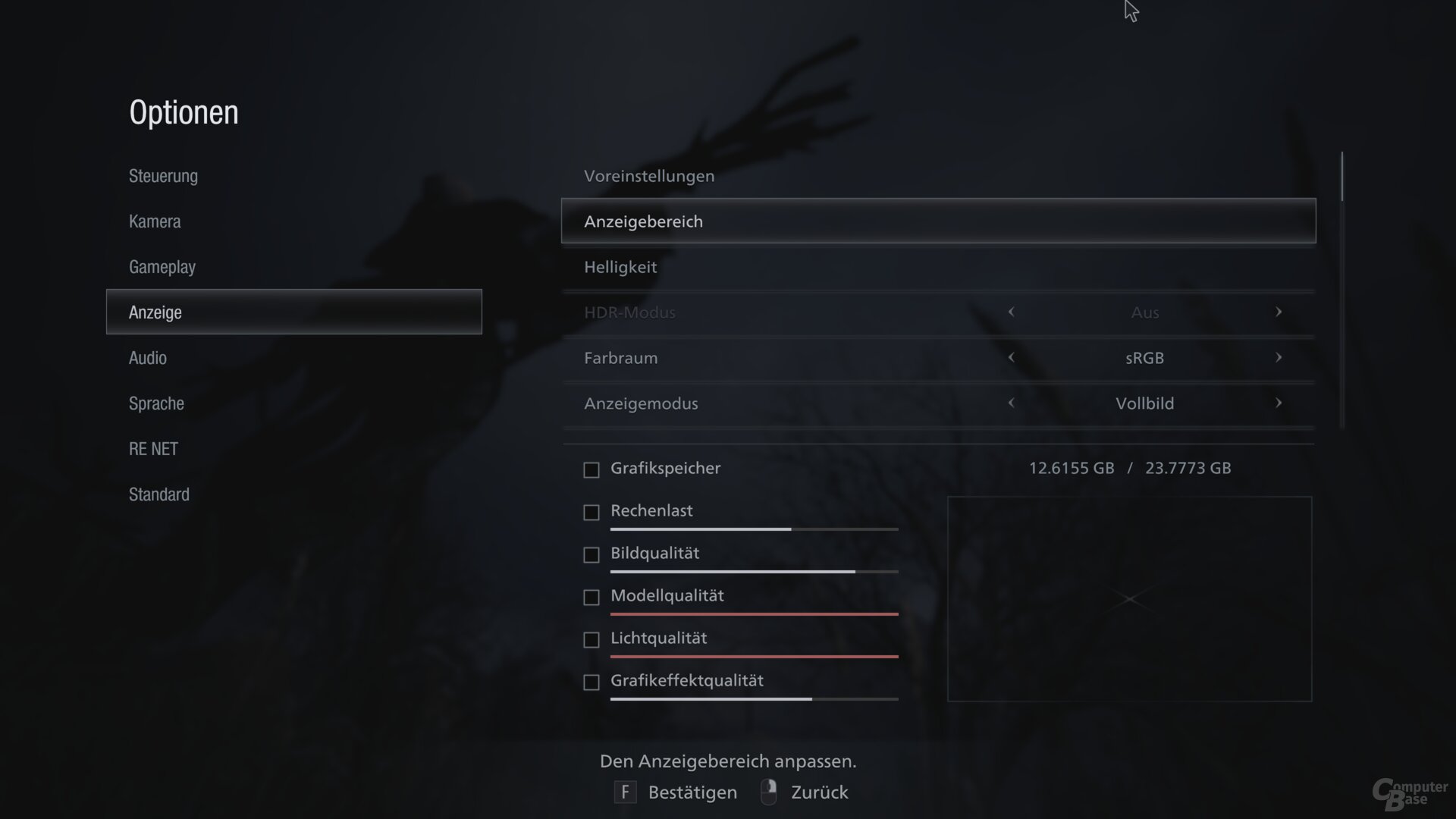 The graphics menu of the PC version of Resident Evil Village
The graphics menu of the PC version of Resident Evil Village
Image 1 of 6
 The graphics menu of the PC version of Resident Evil Village
The graphics menu of the PC version of Resident Evil Village  The graphics menu of the PC version of Resident Evil Village
The graphics menu of the PC version of Resident Evil Village 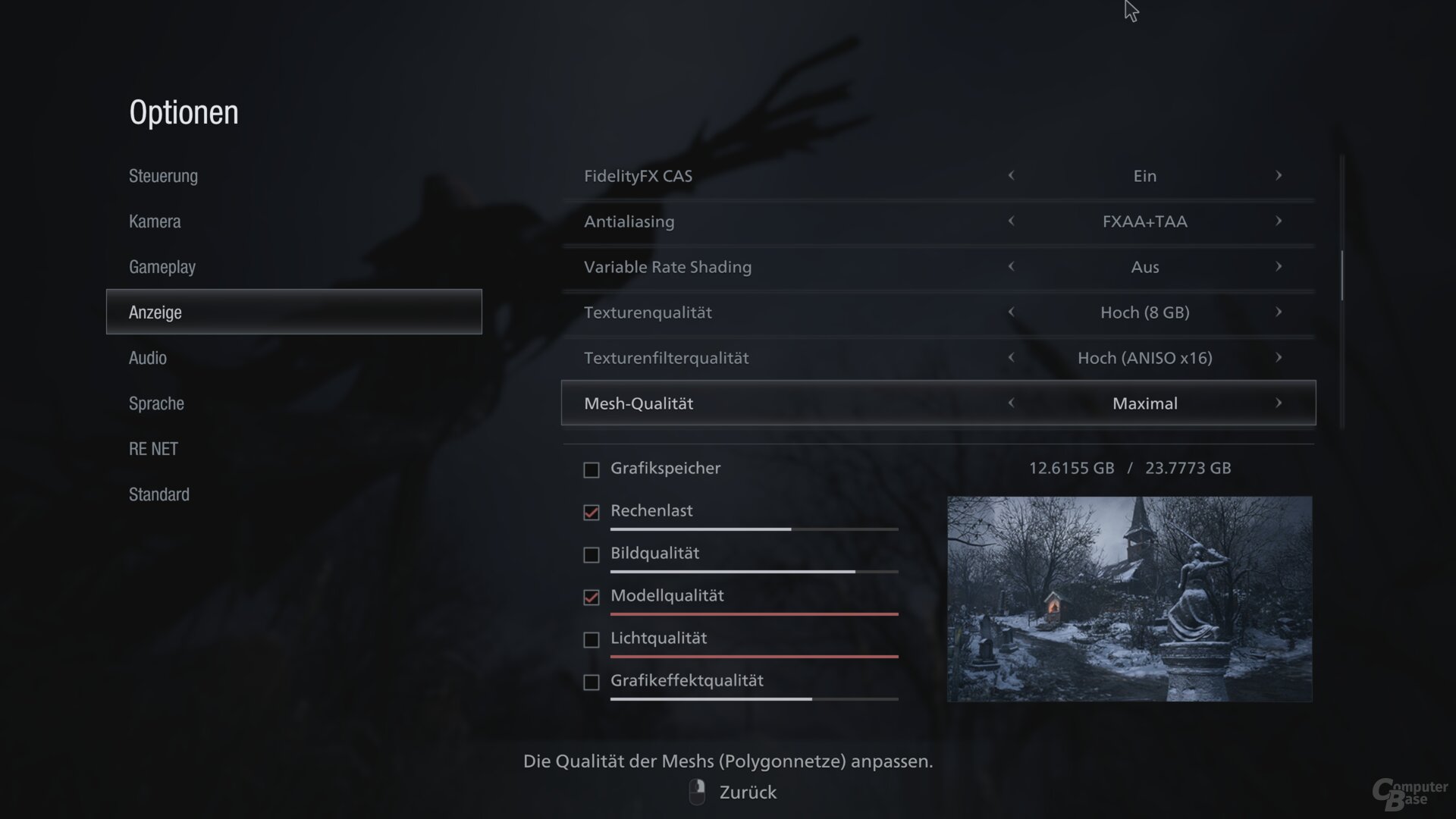 The graphics menu of the PC version of Resident Evil Village
The graphics menu of the PC version of Resident Evil Village  The graphics menu of the PC version of Resident Evil Village
The graphics menu of the PC version of Resident Evil Village The raytracing preset is not the maximum
Resident Evil Village offers five different graphic presets with “Prioritize Performance”, “Balanced”, “Prioritize Graphics”, “Maximum” and “Raytracing”. “Raytracing” is only superior with regard to the “Maximum” rays, because the preset reduces many options. “Maximum”, on the other hand, sets all options all the way to the right, but ray tracing remains deactivated. So if you really want to play with maximum graphic details, you have to select the maximum setting and then also turn up the two ray tracing options.
Variable rate Shading visibly reduces the image quality
If you don't want to get close to the individual graphics options, you can of course also use Variable Rate Shading (VRS) if the graphics card supports the feature. This is the case with Nvidia's Turing and Ampere generation and with AMD's RDNA 2. Then VRS is available with the options “balanced” and “prioritize performance”.
VRS is not a recommendation
Apparently Capcom has only integrated the simple VRS Tier 1, because while Tier 2 can reduce the shading rate almost without loss, in Resident Evil Village the image quality is reduced quite significantly. Even the balanced option makes many details disappear, which also affects the entire image area. It doesn't matter whether it is light outside or dark inside areas.
-
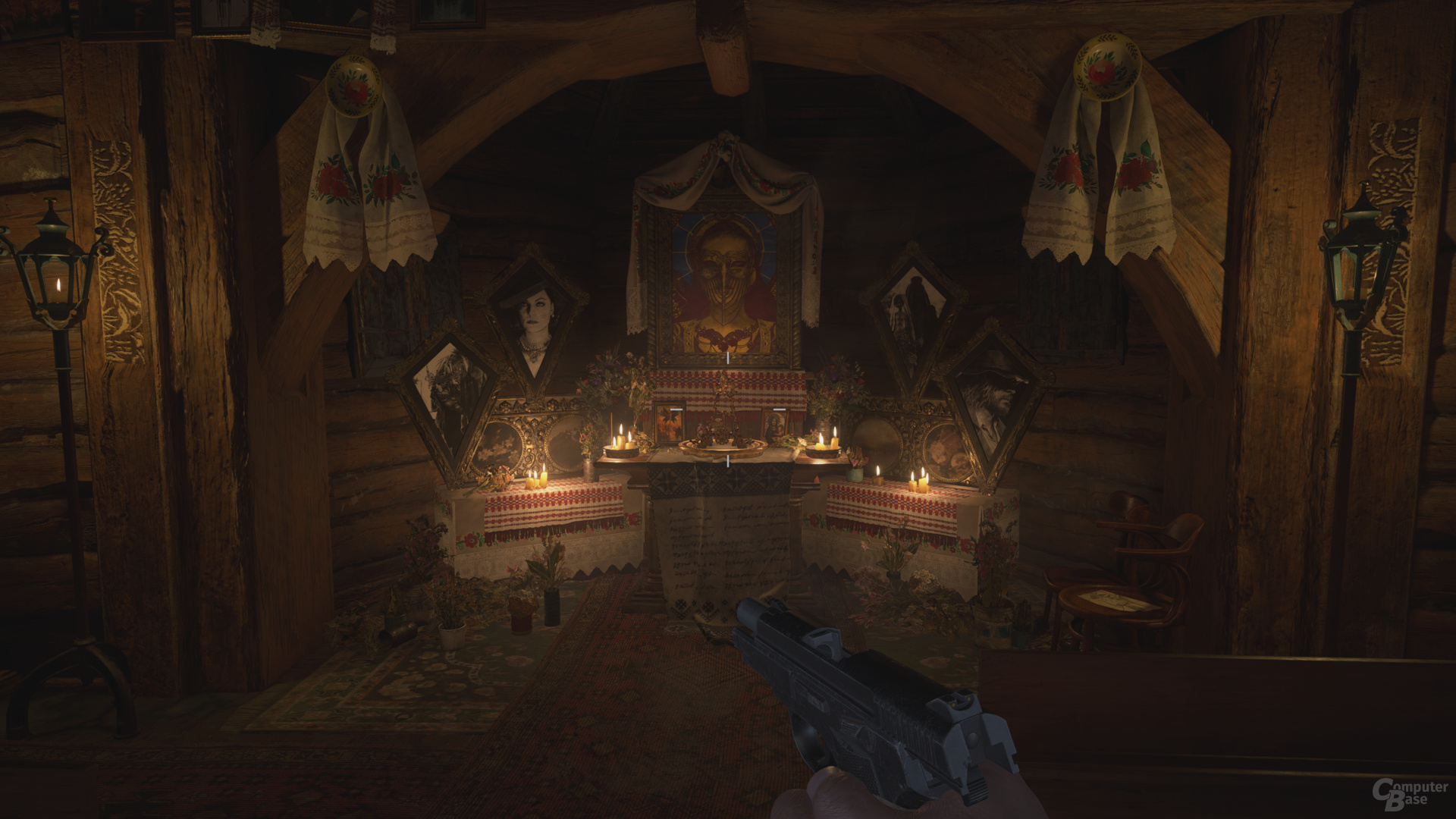 VRS from download
VRS from download
Image 1 of 12
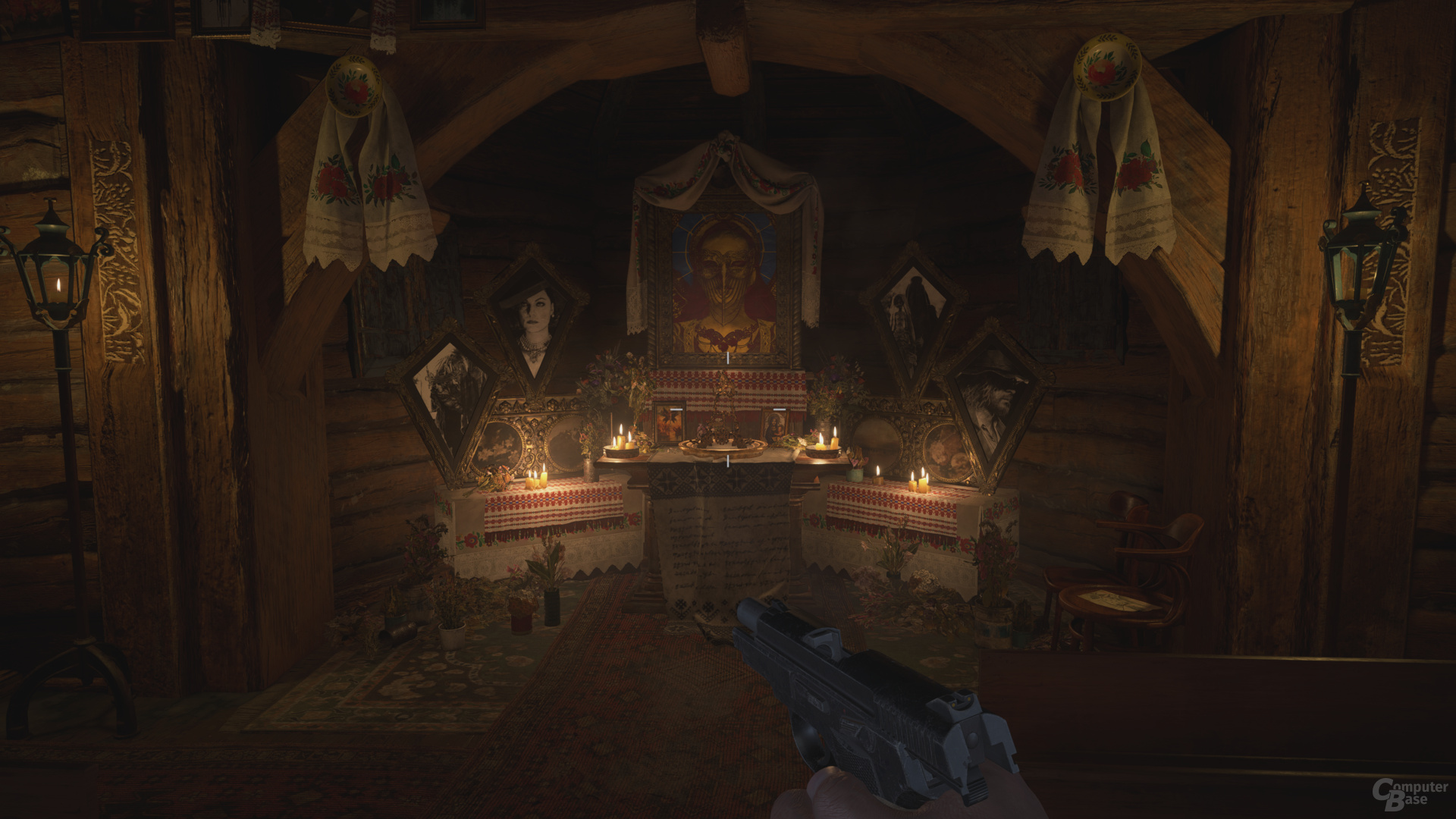 VRS Aus
VRS Aus 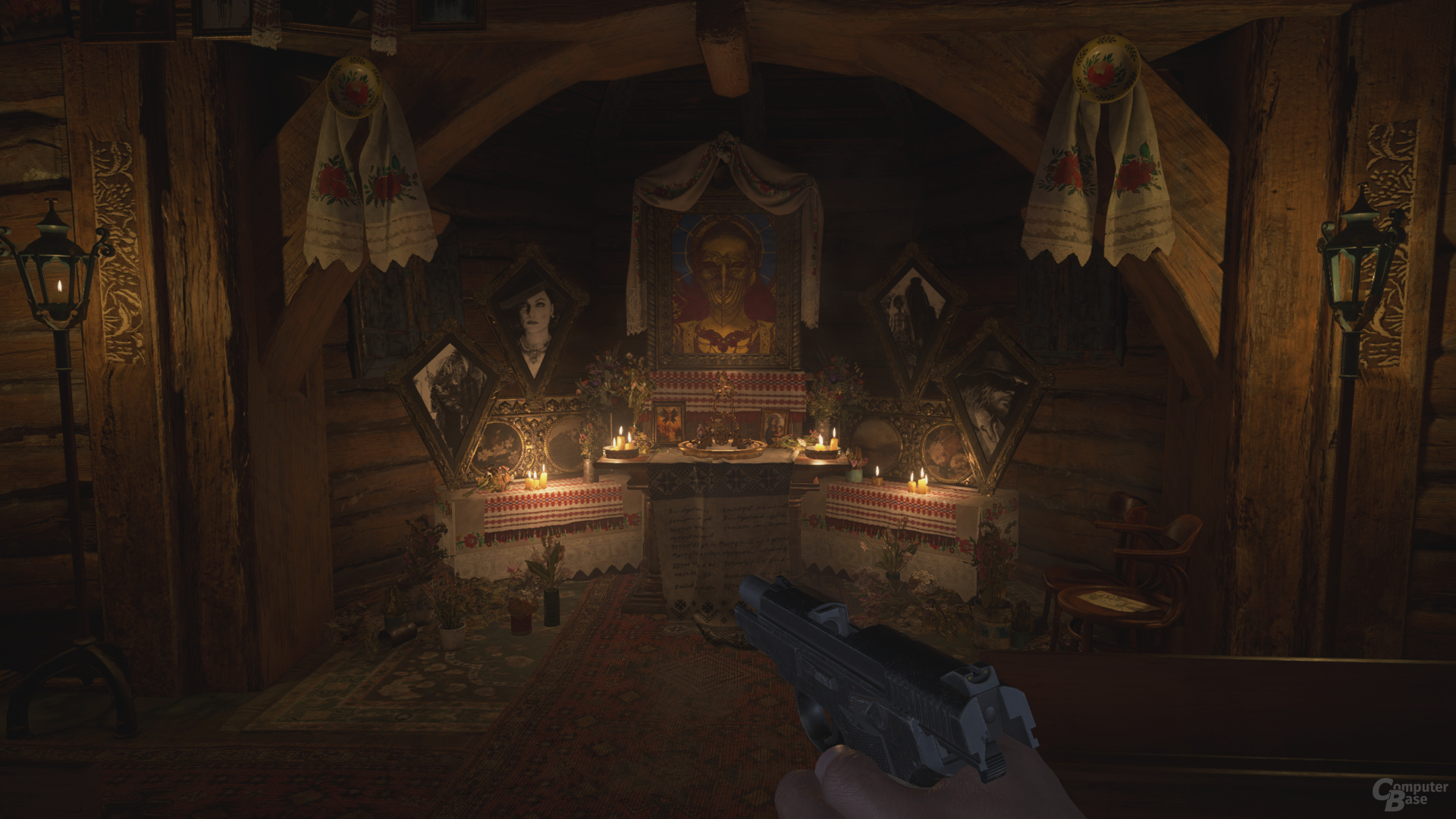 VRS balanced
VRS balanced  .fb2b2b2b2b “Prioritize VRS performance
.fb2b2b2b2b “Prioritize VRS performance 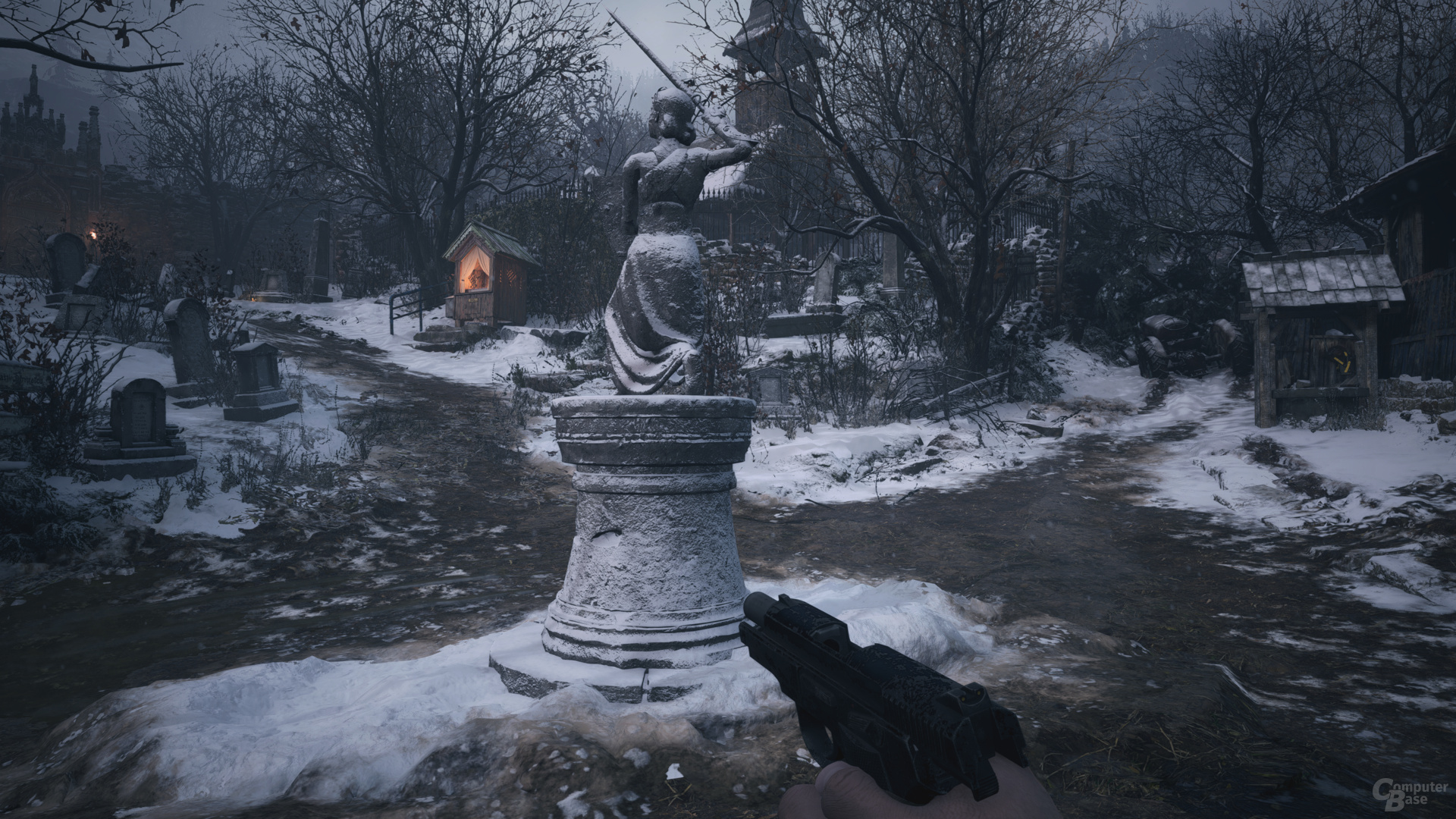 VRS off
VRS off  VRS balanced
VRS balanced  >
>
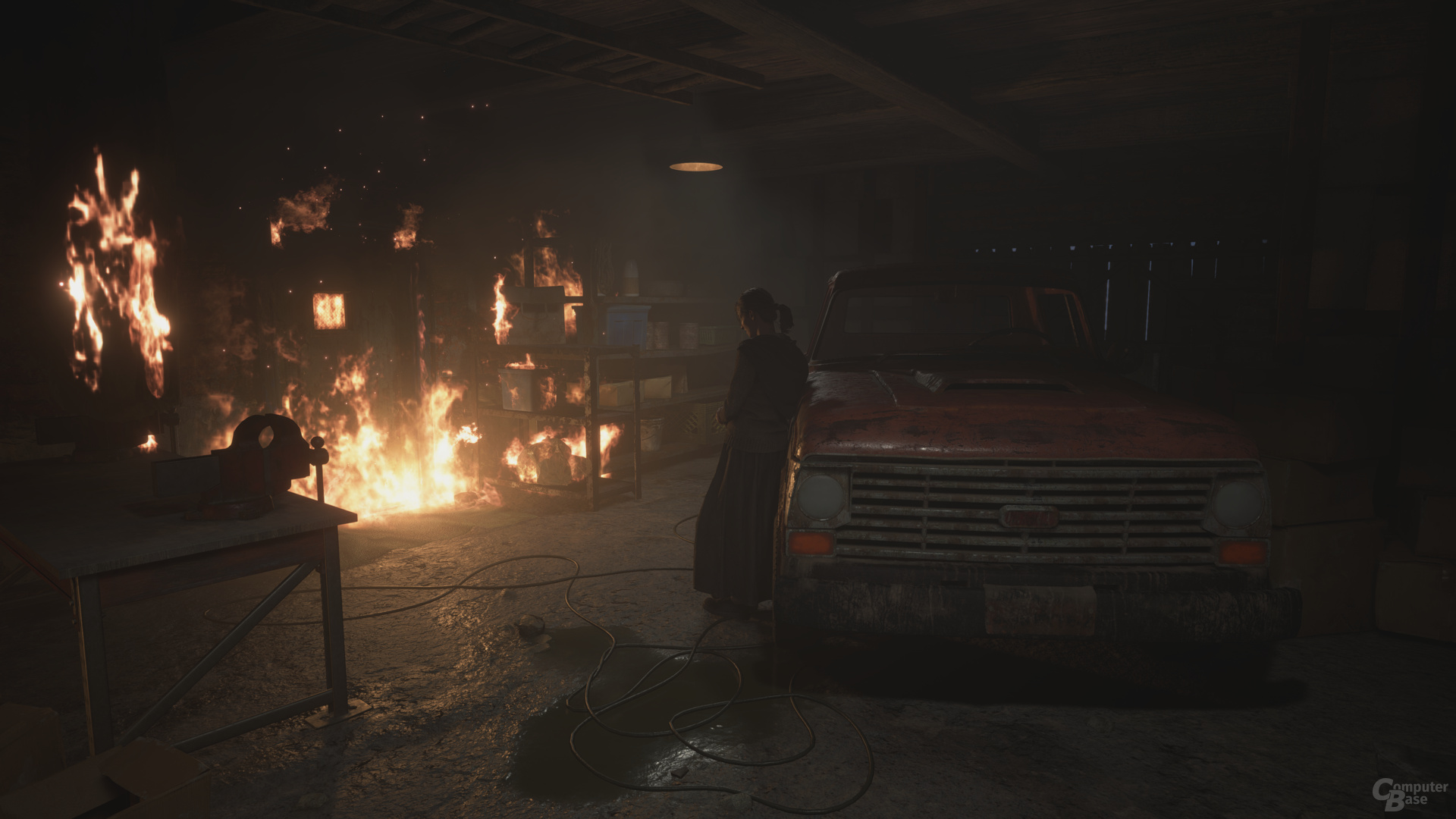 VRS Aus
VRS Aus 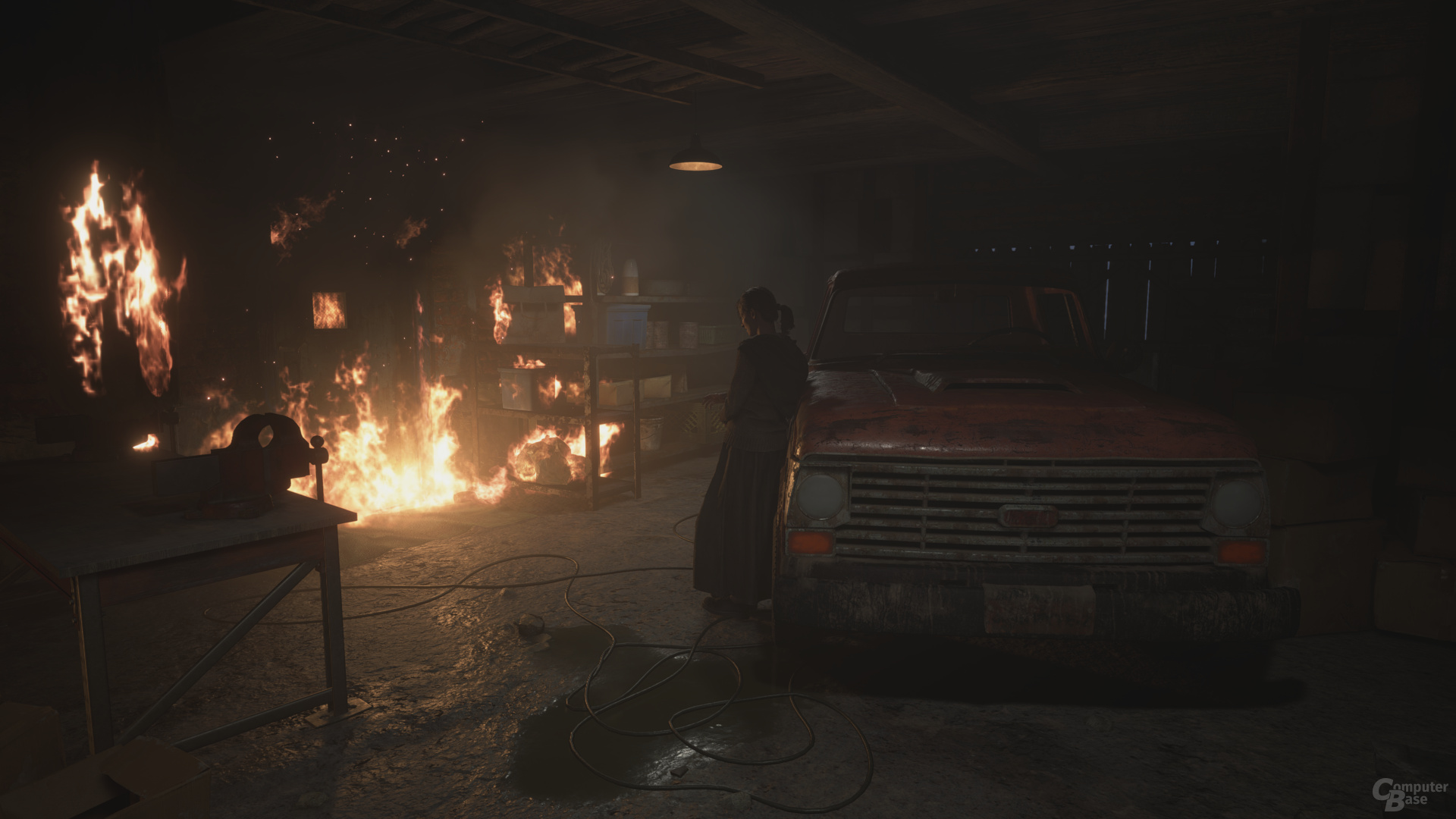 VRS balanced
VRS balanced  VRS Off
VRS Off 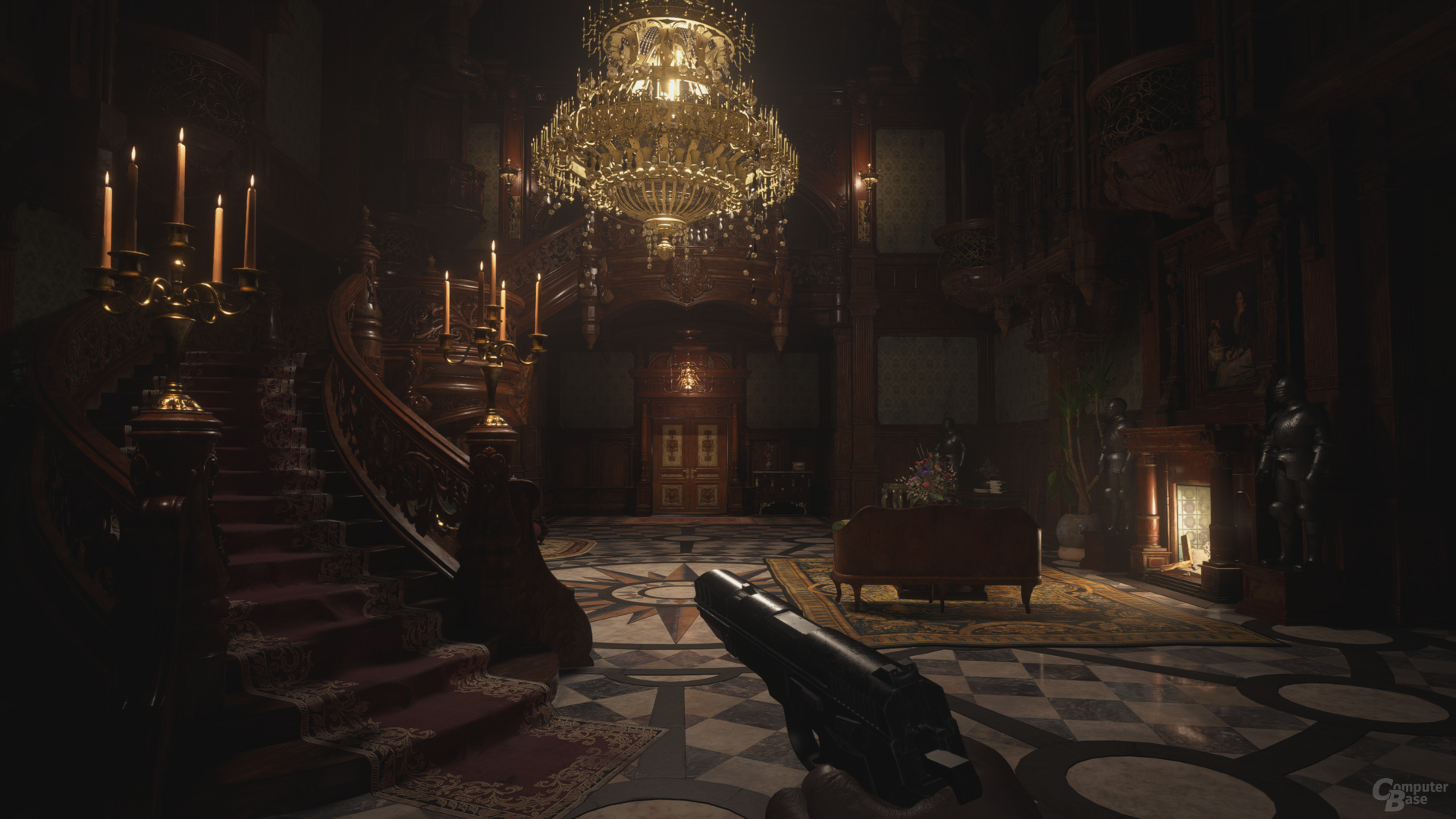 VRS balanced
VRS balanced 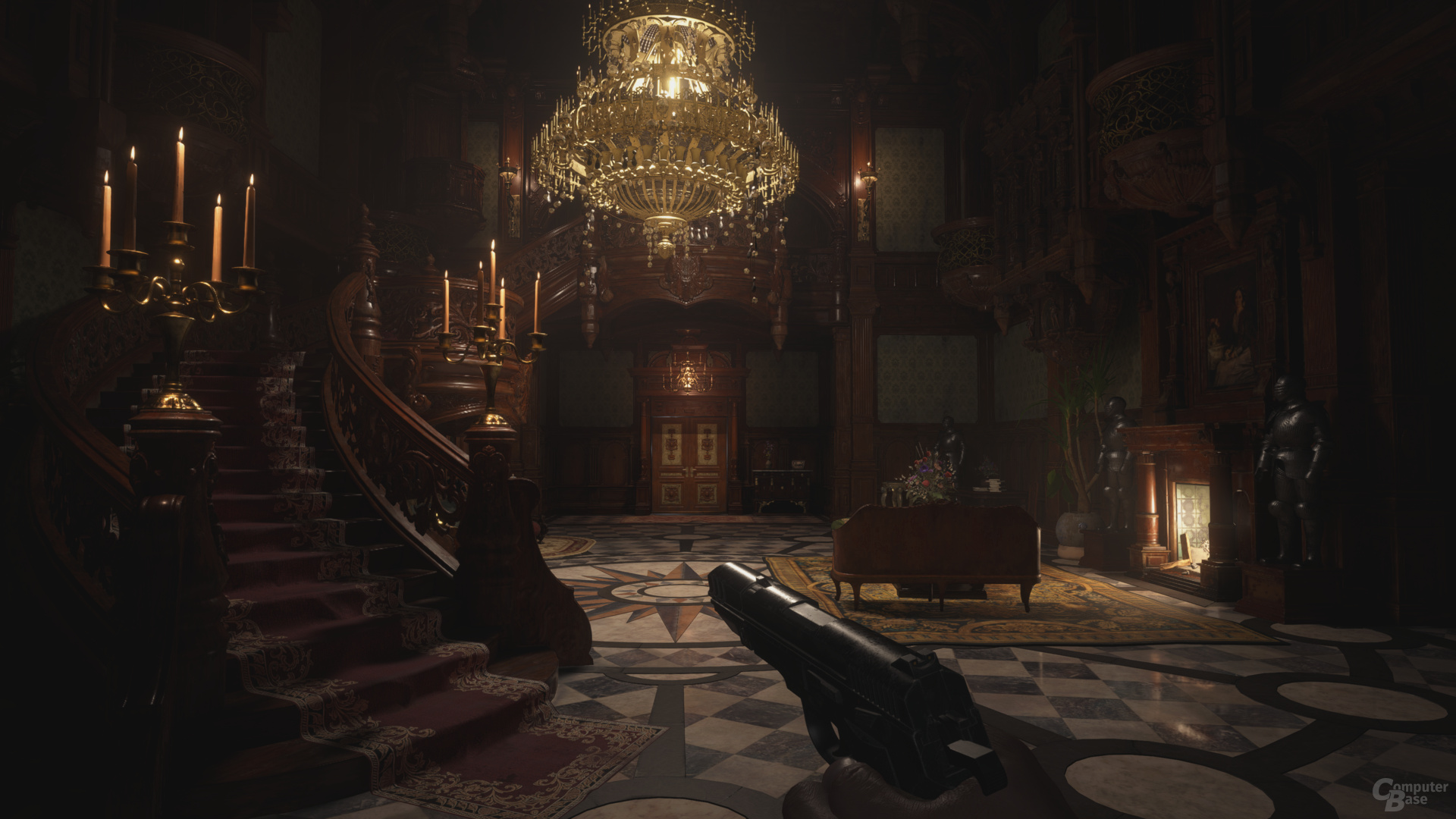 Prioritize VRS performance
Prioritize VRS performance And not just that. VRS also produces graphic errors in the display of fire, which apparently does not tolerate a lower shading rate at all. There is also the effect that small light sources such as the lamps in a chandelier with VRS simply disappear. When the VRS setting is maximized, the chandelier is virtually completely unlit, while it is completely illuminated without VRS.
Variable Rate Shading – 3,840 × 2,160 Unit: frames per second (FPS)
- FPS, average: < ul class = "chart__group-body">
- RTX 3080 @ VRS performance95.3
- RTX 3080 @ VRS balanced92.1
- RX 6800 XT @ VRS performance86.9
- RX 6800 XT @ VRS balanced85.0
- RTX 3080 @ VRS Aus83.5
- RX 6800 XT @ VRS Aus75.4
- RTX 2070 Super @ VRS performance49.8
- RTX 2070 Super @ VRS Balanced48,7
- RTX 2070 Super @ VRS Aus44,3
< li class = "chart__group"> FPS, 0.2% percentile:
- RTX 3080 @ VRS performance79.0
- RTX 3080 @ VRS Balanced77,4
- RTX 3080 @ VRS Aus69,7
- RX 6800 XT @ VRS power64.5
- RX 6800 XT @ VRS balanced63.8
- RX 6800 XT @ VRS Aus59,0
- RTX 2070 Super @ VRS performance43,8
- RTX 2070 Super @ VRS Balanced42,9
- RTX 2070 Super @ VRS Aus39,0
VRS is therefore not independent of the performance gain to recommend. However, this is not that low, at least at the “Balanced” level. The GeForce RTX 2070 Super is accelerated by 10 percent, the GeForce RTX 3080 by the same value and the Radeon RX 6800 XT by 13 percent. However, the maximum VRS setting then only brings a small boost. The Nvidia graphics cards add another 2 (Turing) or 3 percent (Ampere), the AMD counterpart by 2 percent.
On the next page: Benchmarks in FHD, WQHD and UHD, frame times and VRAM allocation


